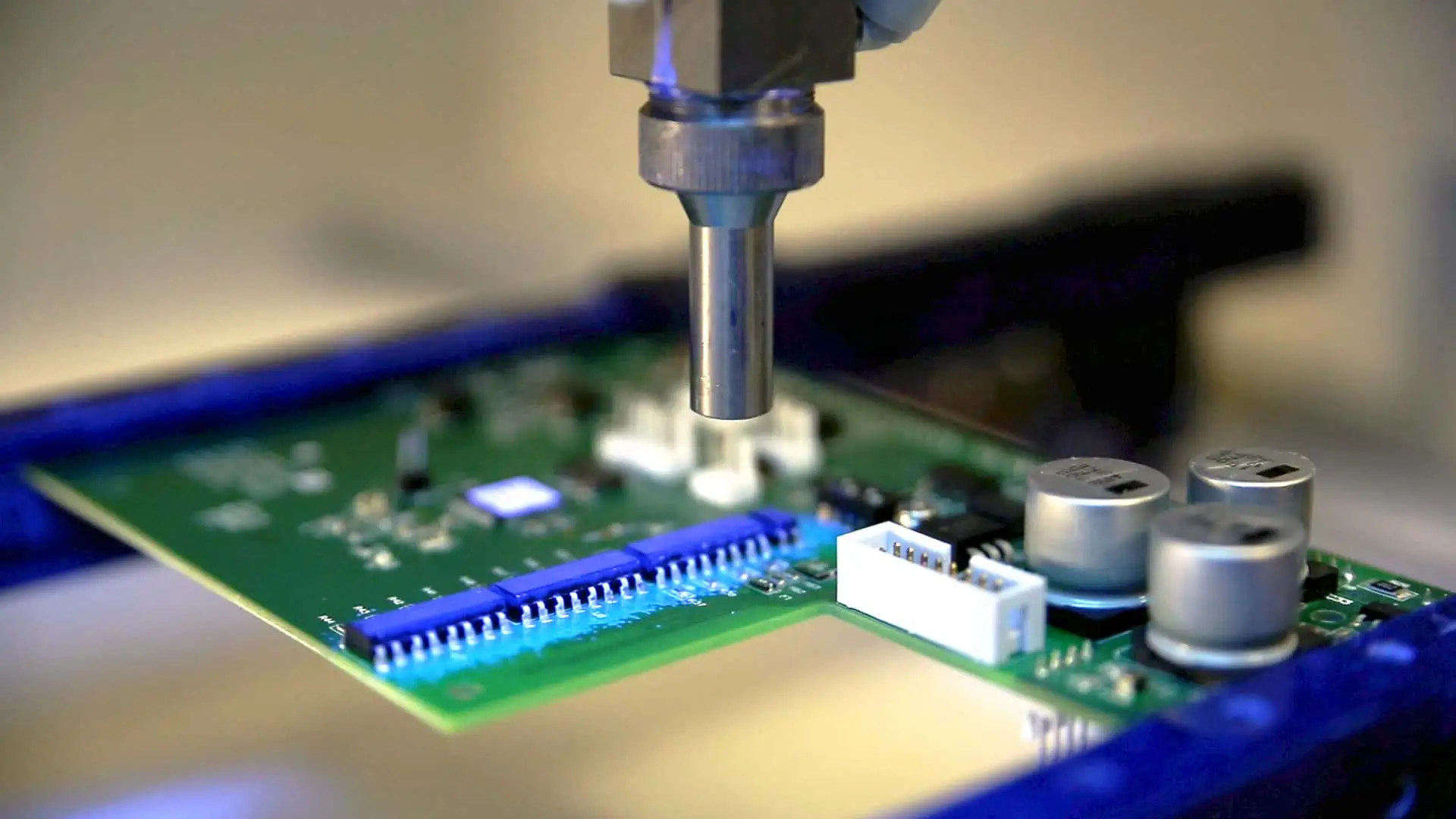In the following article Dymax, a leading manufacturer of UV/LED light-curable materials, sheds some light on the technology behind acrylate and epoxy light-curable formulations used in mission-critical aerospace and defense applications.
In the 1960s ultraviolet (UV) light-curing technology was originally developed as an alternative to solvent-based, heat- and air-drying processes and slow-curing silicones, epoxies, urethanes, pressure-sensitive tapes, cyanoacrylates, modified acrylics, and other methods of joining. However, it only became popular in the early 1980s in industrial manufacturing applications.
Today, the technology has been widely adopted in many industries including automotive, appliance, aerospace, telecommunications, medical device, military and consumer electronics, and graphics arts as they offer users tremendous benefits over other types of materials.
Over the last 40+ years, these materials have evolved, but acrylate and epoxy chemistries remain the same.
Acrylate Systems
The term “acrylate” is a shorthand term for a wide range of materials that includes acrylates, methacrylates, and similar functional groups. Acrylate systems react when exposed to UVA light (always) and visible light (in many cases). The materials exhibit a very broad range of properties.
Depending on additives, acrylate systems can be produced which are colored (i.e., red, blue, or black), opaque, fluorescing (often a requirement for in-line inspection), or thermally conductive. The physical properties of acrylates include adhesion, viscosity, durometer, and appearance. Since acrylates can be made to cure with visible light, fluorescing and red or blue formulations are common.
Cure speeds with acrylate resins depend on formulation specifics, and of course, on the intensity and nature of light used to cure them. Practical cure speeds range (mostly) between 0.5 – 15 seconds. Depth of cure also varies with formula and process specifics. Typical cure depths range from 0.10 in – 0.59 in (2.5 mm – 15 mm).
Acrylate light-curable materials (LCMs) can also be made to react with heat or activator. This is useful when light cannot be used to cure the material due to the presence of a “shadow.” Acrylate LCMs typically cannot be cured with moisture or air.
Surface tack is sometimes observed with acrylate LCMs. Surface tack is caused by the interference of atmospheric oxygen with the free radical cure mechanism on the surface of the resin. In most cases, surface tack can be eliminated by altering the curing process with greater light intensity, longer cure time, or a slight adjustment in the wavelength of light used. On the other hand, there are some acrylate LCMs that will not cure tack free even with these alterations. Most of these products were designed for applications where the light-curable material is not exposed to air, i.e., in bonding applications between two substrates.
Epoxy (Cationic) Systems
Epoxy LCMs sometimes called “cationic systems” by virtue of the type of photoinitiator employed as opposed to the chemical make-up of the resin, comprise the second main class of light-curable materials. The range of properties which can be achieved with these products is somewhat narrower than with acrylate LCMs. Nevertheless, epoxy LCMs can be formulated to exhibit a few advantages over some acrylate light-curable materials, including tack-free cures (no oxygen inhibition), and superior adhesion to certain substrates.
A point of difference between epoxy and acrylate LCMs is that the development of full properties often takes longer for light-curable epoxies, so heat is sometimes used to accelerate the cure. In addition, the curing of cationic LCMs is impeded by moisture/humidity.
In general, UV curing increases production speed and product throughput, decreases work-in-progress and scrap, enables 100% in-line inspection, and because it is a solvent-free process, reduces environmental pollutants.











